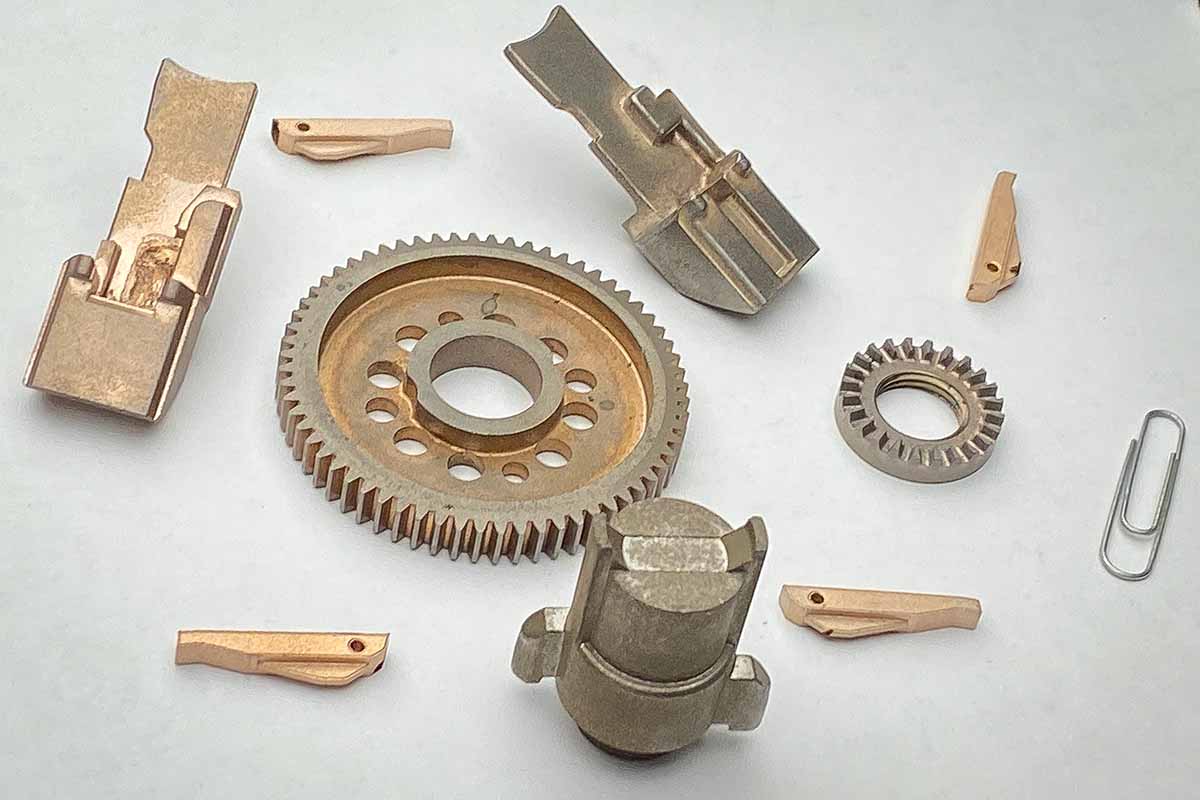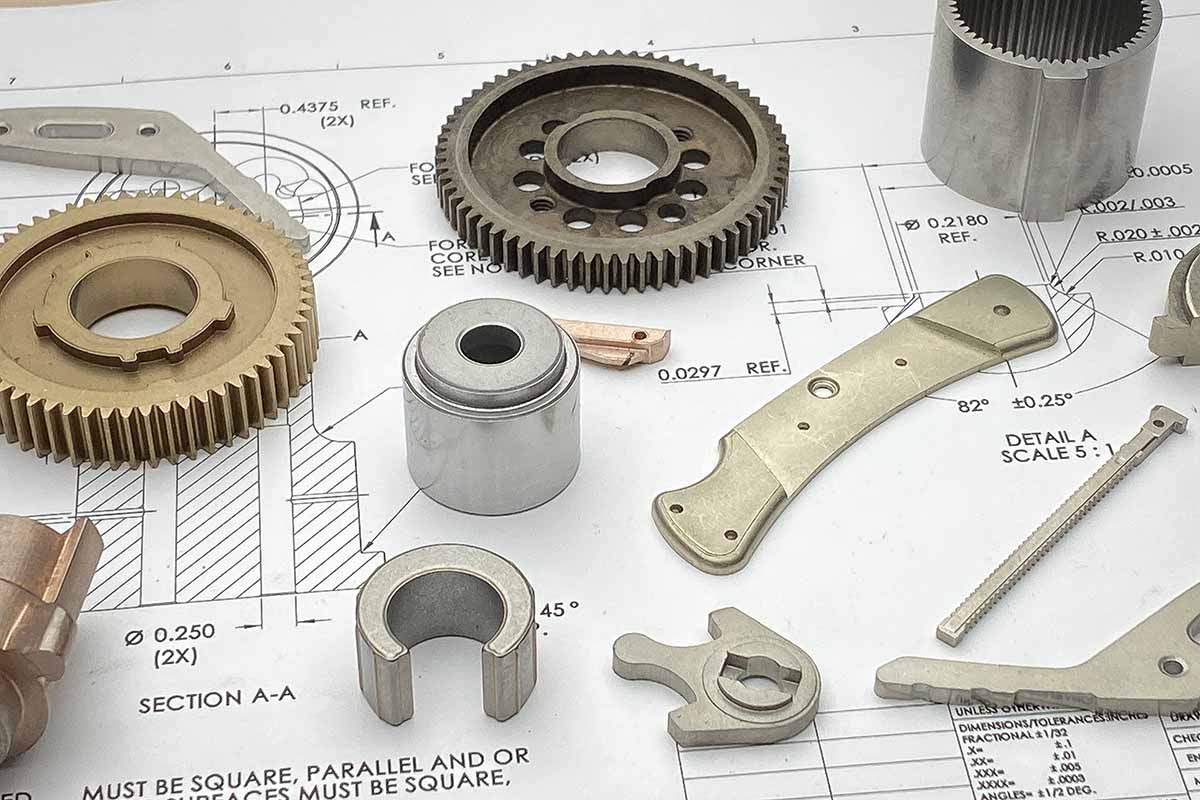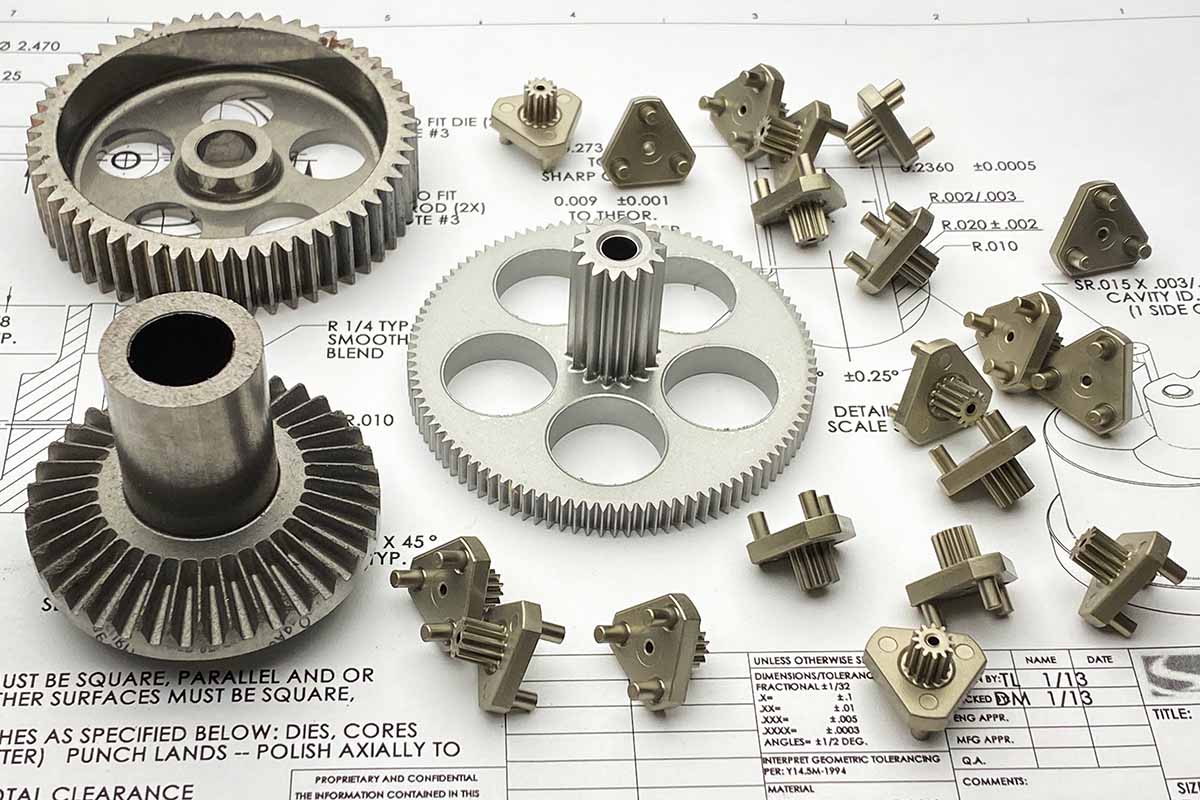ASCO Sintering often uses copper infiltration to make powdered metal parts. Making highly engineered sintered gears, powdered metal ring gears, gear carriers, and different miniature sintered parts. Components are copper infiltrated because they have higher tensile strength, higher density, impact properties, hardness, and ductility.
How does Copper infiltration work?
The use of alloyed sintered steel as mechanical components is continuously increasing. But, the sintered materials require higher mechanical and corrosion-resistant properties that can be achieved by reducing the porosity. Here, the copper infiltration technique works!
In the copper infiltration process, a measured amount of copper-base alloy spreads over the surface of a porous ferrous compact, and the two components are sintered at a temperature (>2000°F) whereby the copper alloy melts and flows into the porosity of the ferrous compact through capillary action. Once the cooling process is completed, the copper alloy is solidified permanently within the ferrous structure.
The infiltration process seals the sintered components, increases the density, and makes the part corrosion resistant. This process also improves the mechanical properties (hardness, toughness, strength, etc.) of the sintered materials and facilitates the manufacture of complex parts or unique geometries like axial projections and irregular curves, radial projections, splines, key-ways, counterbores, bosses, and more.
Benefits of using Copper Infiltration in Powder Metal
The copper infiltrated powdered metal parts offer a couple of advantages over traditionally manufactured metal parts like forging or die-casting. These benefits include:
- Corrosion resistance: Reinforcing powdered metal manufactured components, the infiltration process largely depends on the characteristics of a low-temperature penetrant. Copper is one such good penetrant that increases the purity of the sintered materials and improves the corrosion resistance property of the parts.
- Superior surface finish: The infiltration process seal the porous areas and results in high levels of uniformity in sintered materials, which in turn provides a superior surface finish of the metal parts.
- Improved mechanical properties: Copper infiltrated powdered metal parts offer improved physical or mechanical properties like high tensile strength, ductility and impact resistance, improved machinability, and improved thermal conductivity.
- High reliability: The parts also offer long-term performance reliability in critical mechanical applications like gear mechanisms and other power transmission systems.
- Perfect for hydraulic applications: Copper infiltrated P/M parts provide pressure tightness for the leak-free operation which makes the parts superior for hydraulic applications.
- Cost-effectiveness: Usages of copper infiltrated powdered metal parts offer precise placement, ease of handling, less energy consumption, and all of which help lower the impact on the bottom line by trimming costs.
At ASCO Sintering, we apply state-of-the-art powdered metal technology to the manufacture of copper infiltrated sintered metal parts that feature extensive customization, high accuracy, and tolerances of ±0.001 in tool held direction, ±0.003 in press held direction





